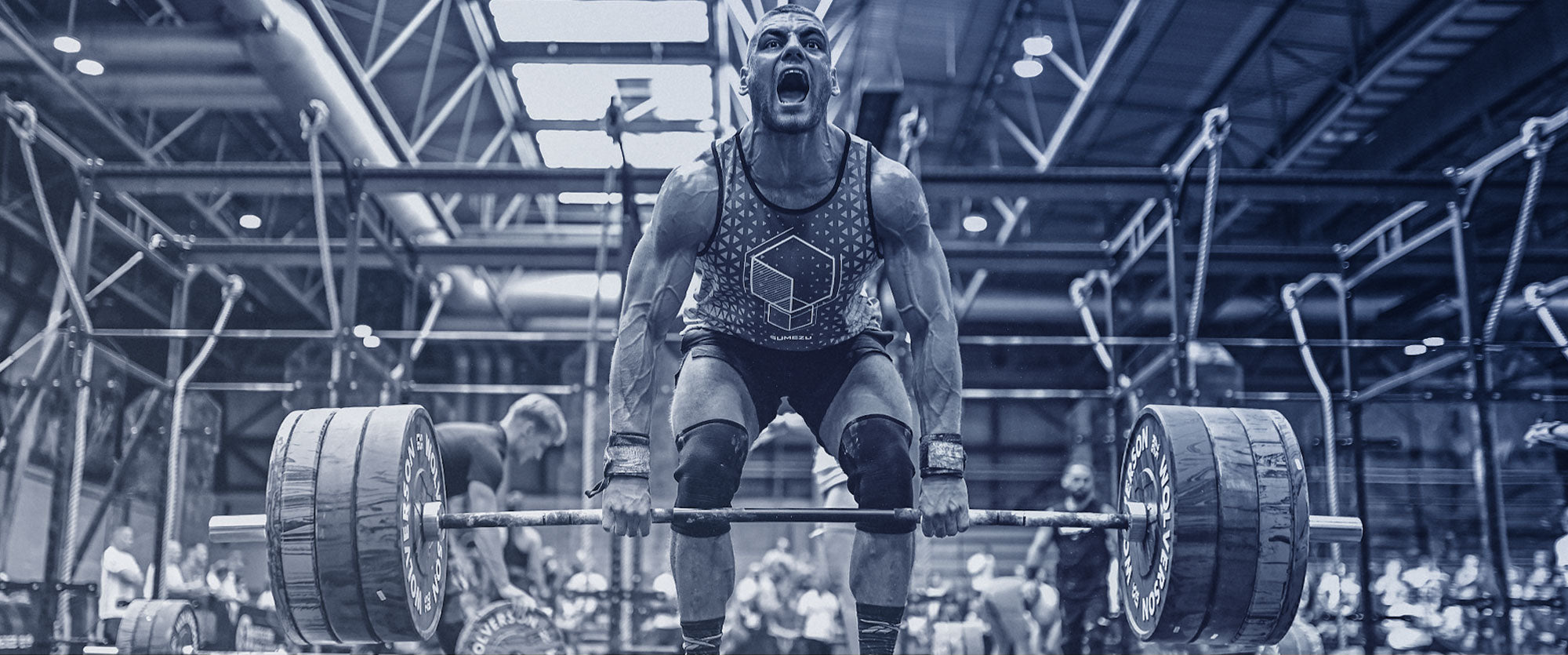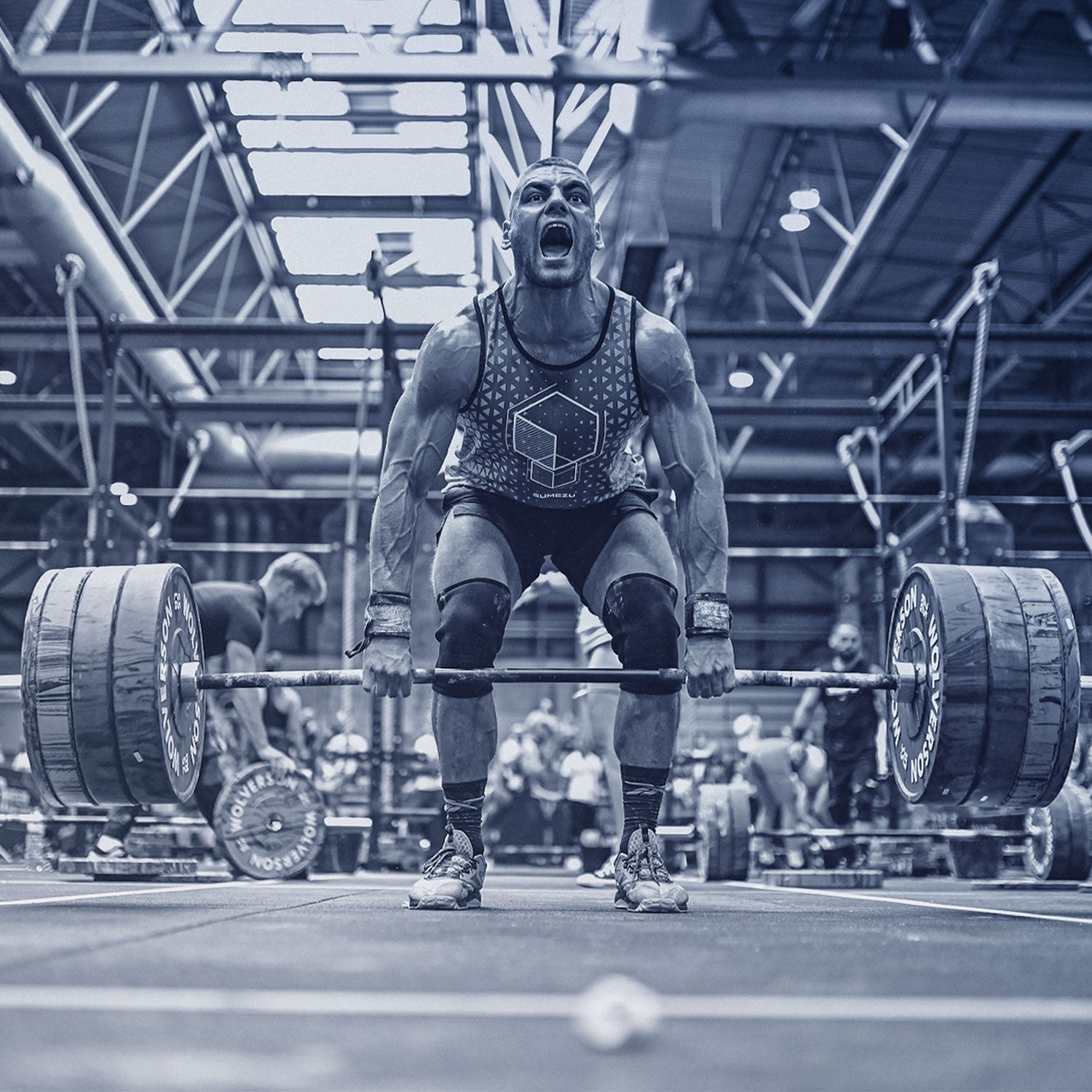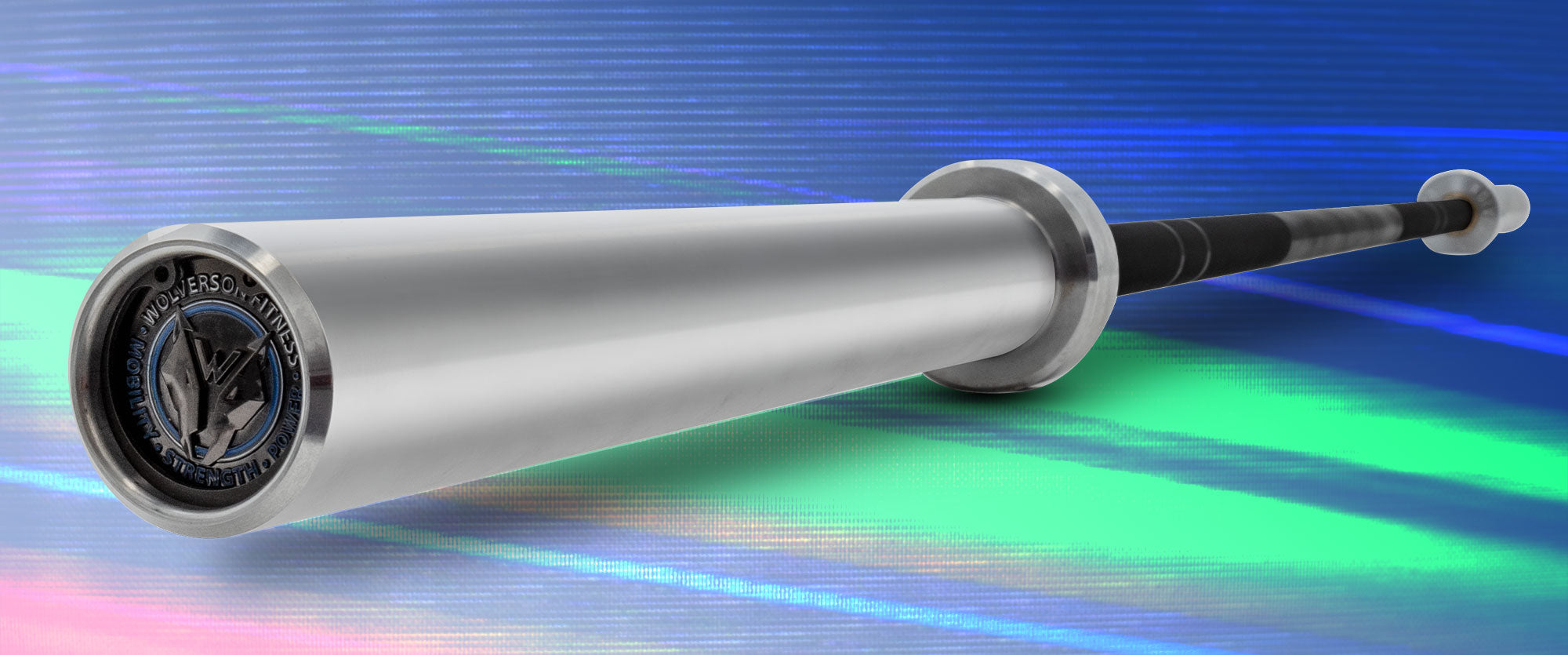With so many different barbells out there, it can be confusing to find which one is right for you. We’ve put together a barbell guide to help you figure out which one is best for your training needs! Whether it’s a starter bar for your home gym, or picking which bar is right for your commercial gym, our barbell guide will help you decide!
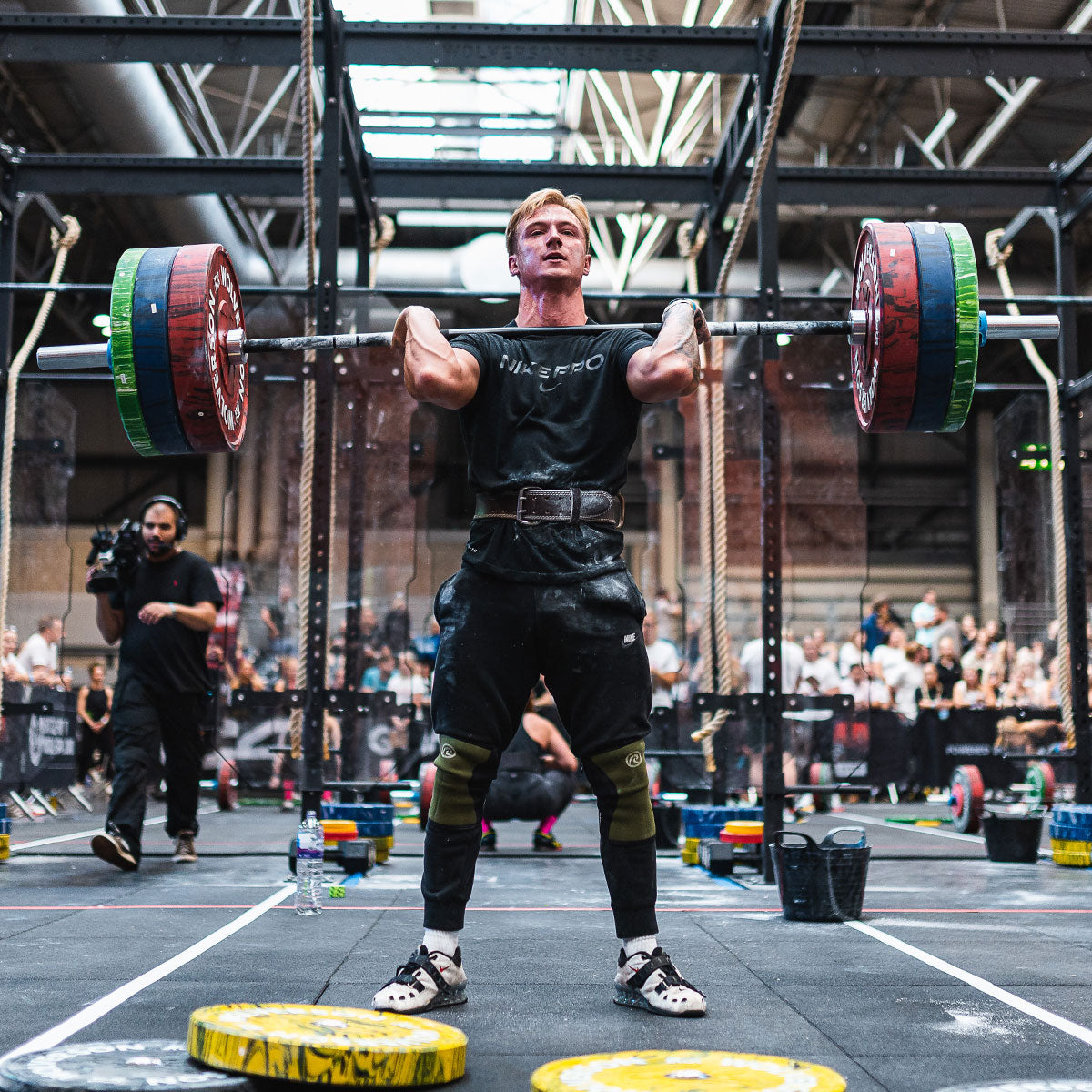
MATERIAL
STEEL VS SPRING STEEL
Steel is an alloy made from iron and carbon plus other alloying elements in various amounts to improve its mechanical properties compared to raw iron. Spring steel is usually a higher alloyed steel and has a higher yield strength compared to its counterpart, meaning it will have more elasticity (whip) during the lift.
Spring Steel is generally not as brittle and has a higher resilience when bending, meaning it'll bend during the lift but go back to its original shape. Our Ultra Bars are made from spring steel, making them ideal for whippy movements such as the Olympic Weight Lifting movements and CrossFit.
Tensile & Yield Strength
Tensile & yield strength is measured in pounds per square inch (PSI) and is used to measure how the barbell performs under intense loads. This illustrates the strength of the steel used in the barbell shaft and how much elasticity the barbell has. Stressing the barbell above its yield strength rating will result in permanent deformation once the weights have been removed. A lower tensile strength rating equates to a lower yield rating, you should avoid a barbell with less than 165k PSI rating. All of our barbells have a minimum tensile rating of 190k PSI, which is seen as the industry standard for barbells.
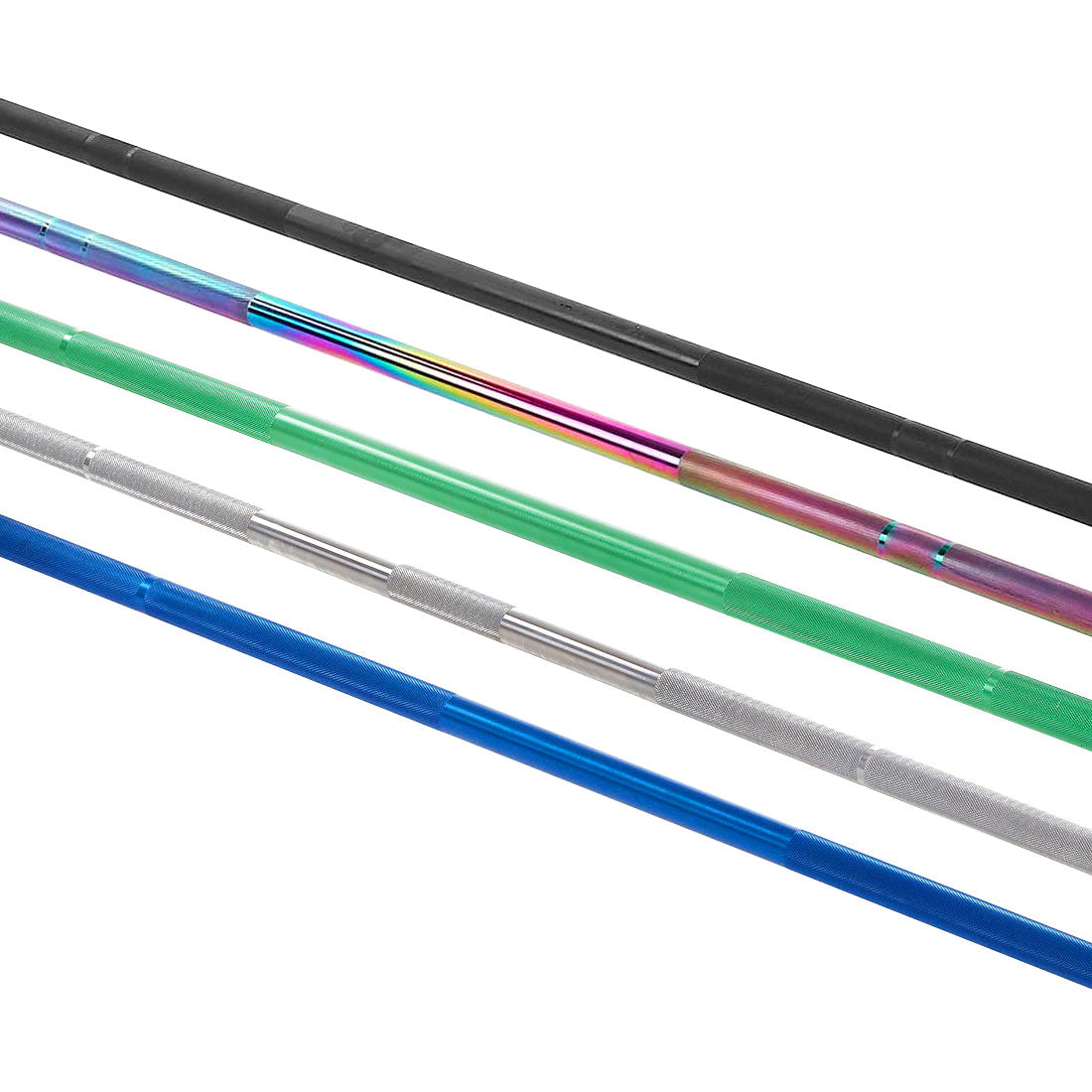
COATINGS & FINISH
Hard chrome: One of the most durable of the finishes. It stays shiny, doesn’t chip, and doesn’t rust except in the most hostile of conditions. Once the bar has had the knurling cut into the shaft, it is then submerged into a bath of deposit chrome.
Cerakote: Cerakote is a specialised ceramic-based coating, a technology first developed for the firearm industry due to its robustness in slender coatings.
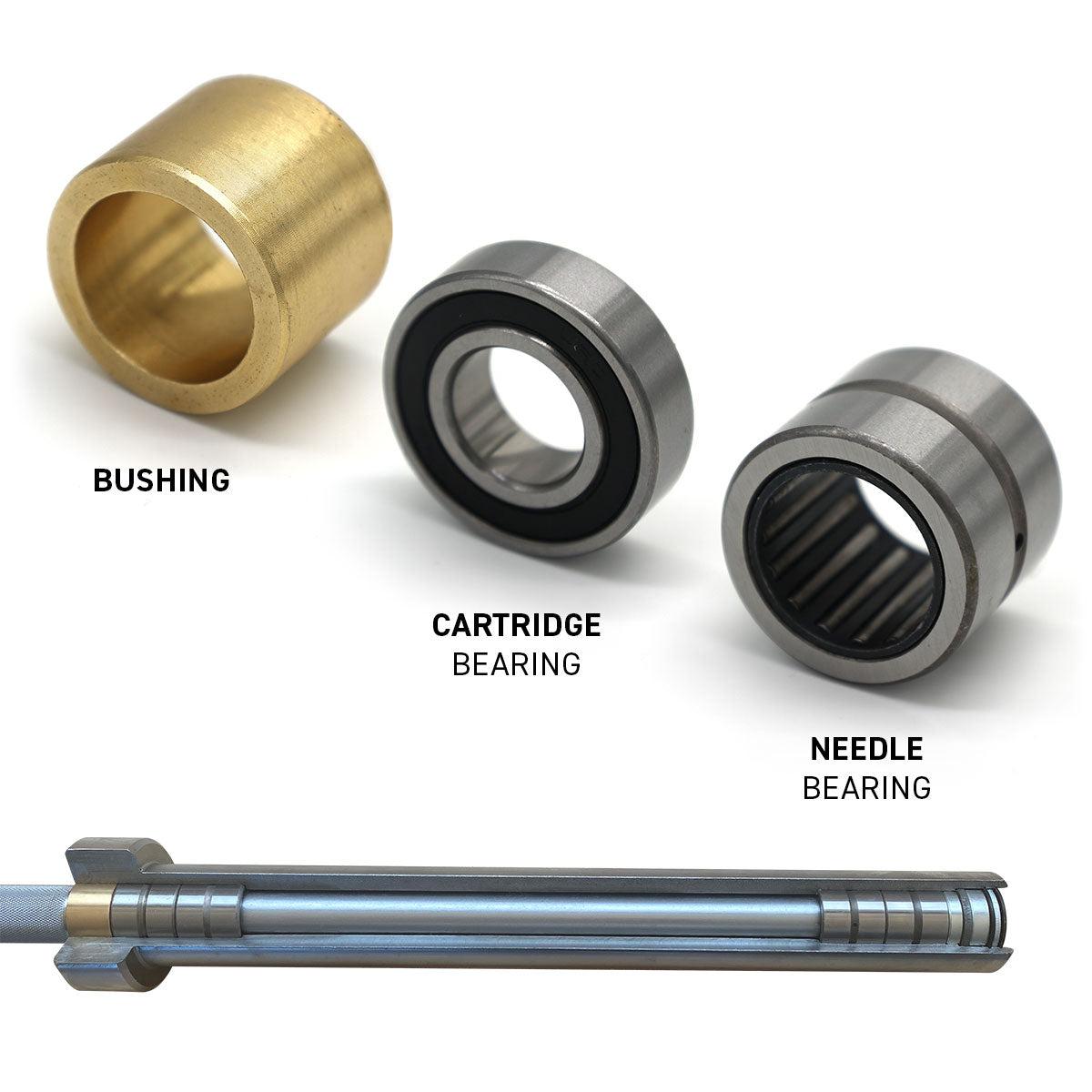
Bushings, Bearings & Rotation
Bushing and Bearings affect how much the sleeves spin, which is important when performing Olympic lifts such as the clean and jerk. A smooth spinning sleeve will minimise the torque rotation on your wrists as you perform the lift.
Our barbells use a mix of bushings and bearings depending on the design the barbell. A good quality bushing will be made from bronze, as materials such brass and steel are a cheaper, less effective material. Our barbells only use bronze bushings, such as The Wolverson Olympic Bar.
Needle Bearing - Contains roller needles and offers increased rotation and higher shock resistance
Cartridge Bearing - Sealed with ball bearings inside, offers less rotation compared to Needle Bearing
Bushing - Self lubricated bronze bushings that offer a slower rotation, commonly used in powerlifting bars
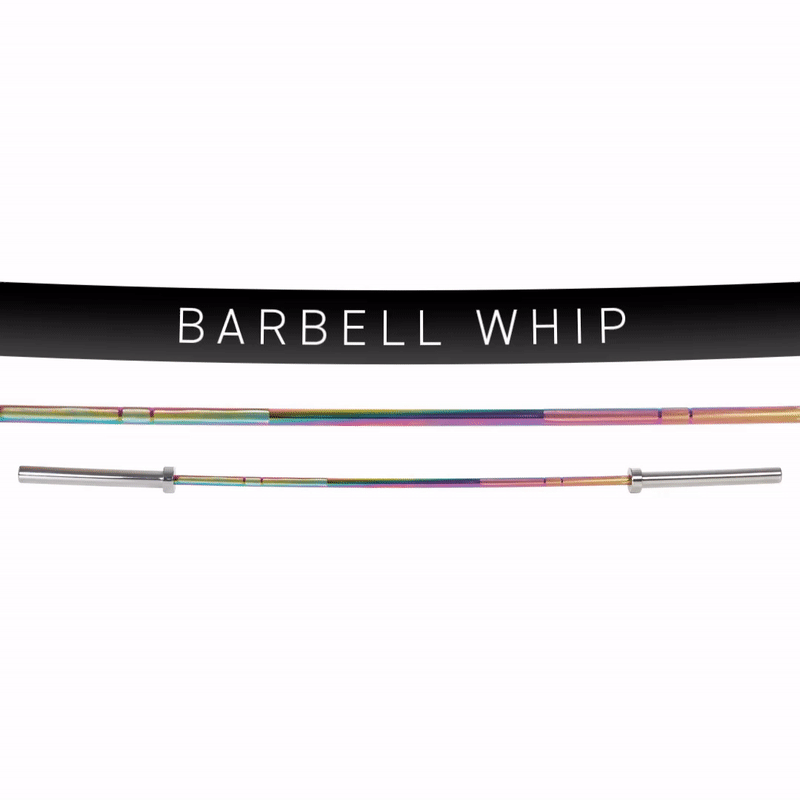

WHIP
Whip is the elastic energy a bar holds when a lift is performed, in other words how much the barbell flexs during the explosive part of a lift. There is no official rating for ‘whip’, some athletes may disagree with how whippy a bar is! Whip only comes into play during heavier lifts, as it can take a heavy load for the bar to whip.
A bar with high whip will bend during the lift and then return to a straight position, bringing the weight with it. This can help the lifter with heavier weight, as the whip can assist with the movement of the weight.
USING WHIP
A skilled lifter will use the whip of the bar to their advantage, helping propel the weight upwards. A whippy bar is ideal for Olympic lifting and CrossFit and is less desirable for powerlifting, as the whip of the bar can become more unstable during static lifts. For example, if you are performing a heavy squat, you would ideally not want a whippy bar as this could have a negative affect on your balance during the lift.
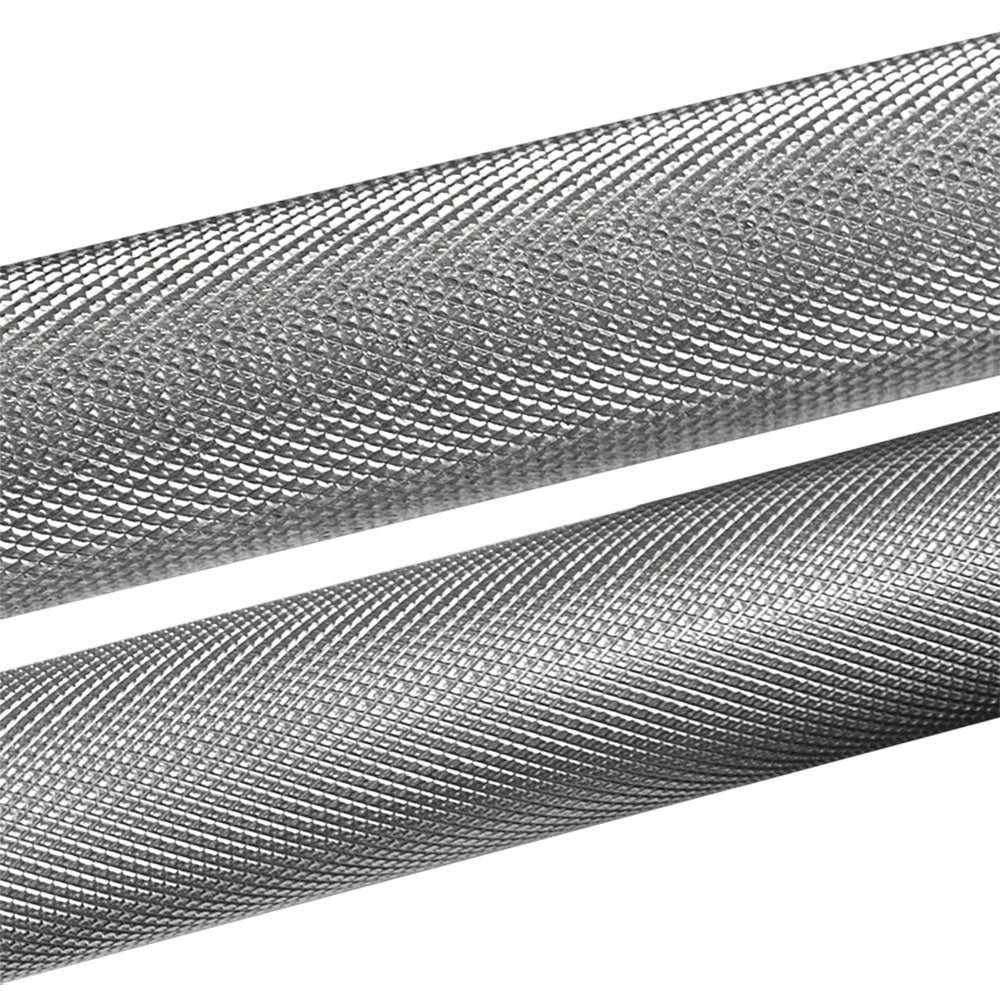
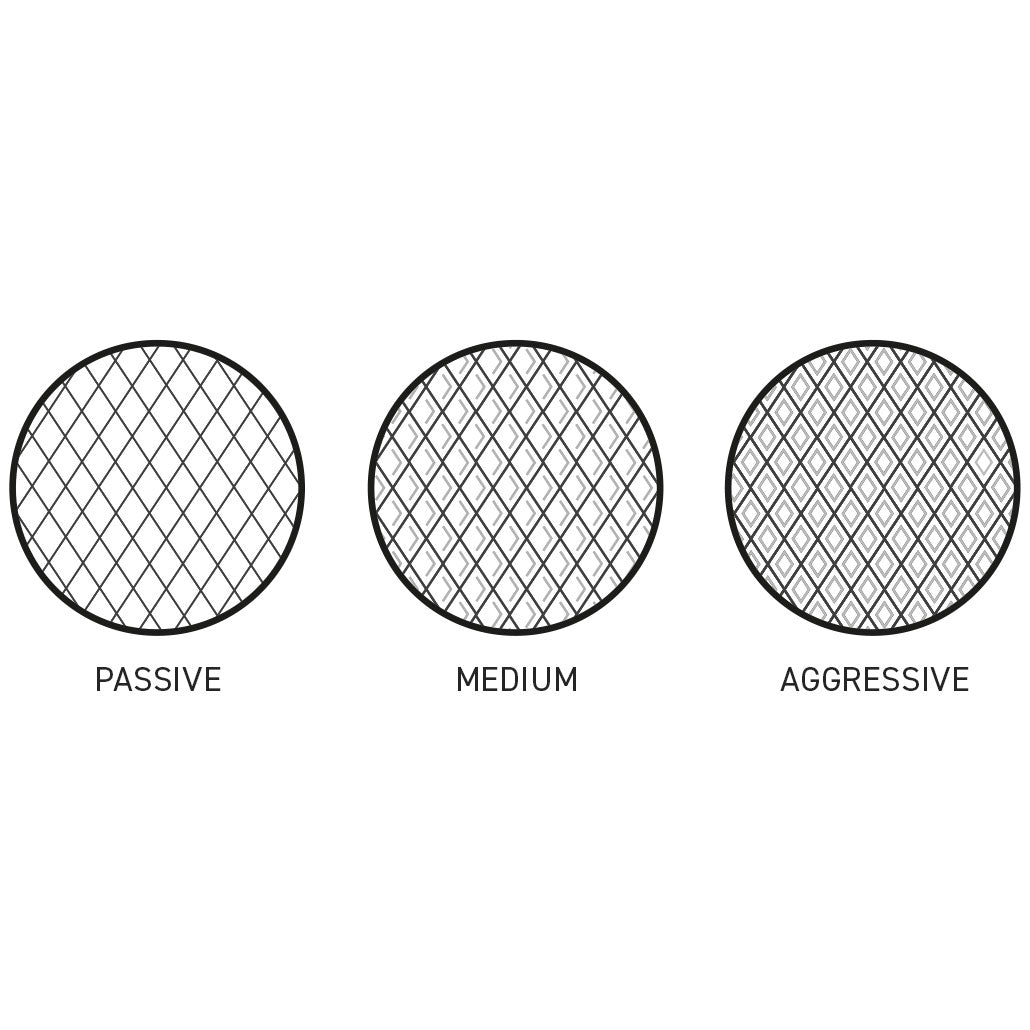
KNURLING
Knurling is the crosshatch pattern on the shaft of the barbell, which is designed to increase the friction between your hands and the barbell, improving your grip. There are different types of grip with different depths, the deeper the knurling, the more aggressive it will be, thus giving you better grip on the bar. If you use an aggressive knurled bar frequently, it can be rough on your hands.
TYPES OF KNURLING
To help you decide, we've rated our barbells with 3 different types of knurling; passive, medium and aggressive. Passive and Medium knurling's are ideal for high repetition movements and won't tear your hands up! Our aggressive knurling is useful when performing heavy, static movements such as the deadlift, this knurling is featured on our Power Bar.

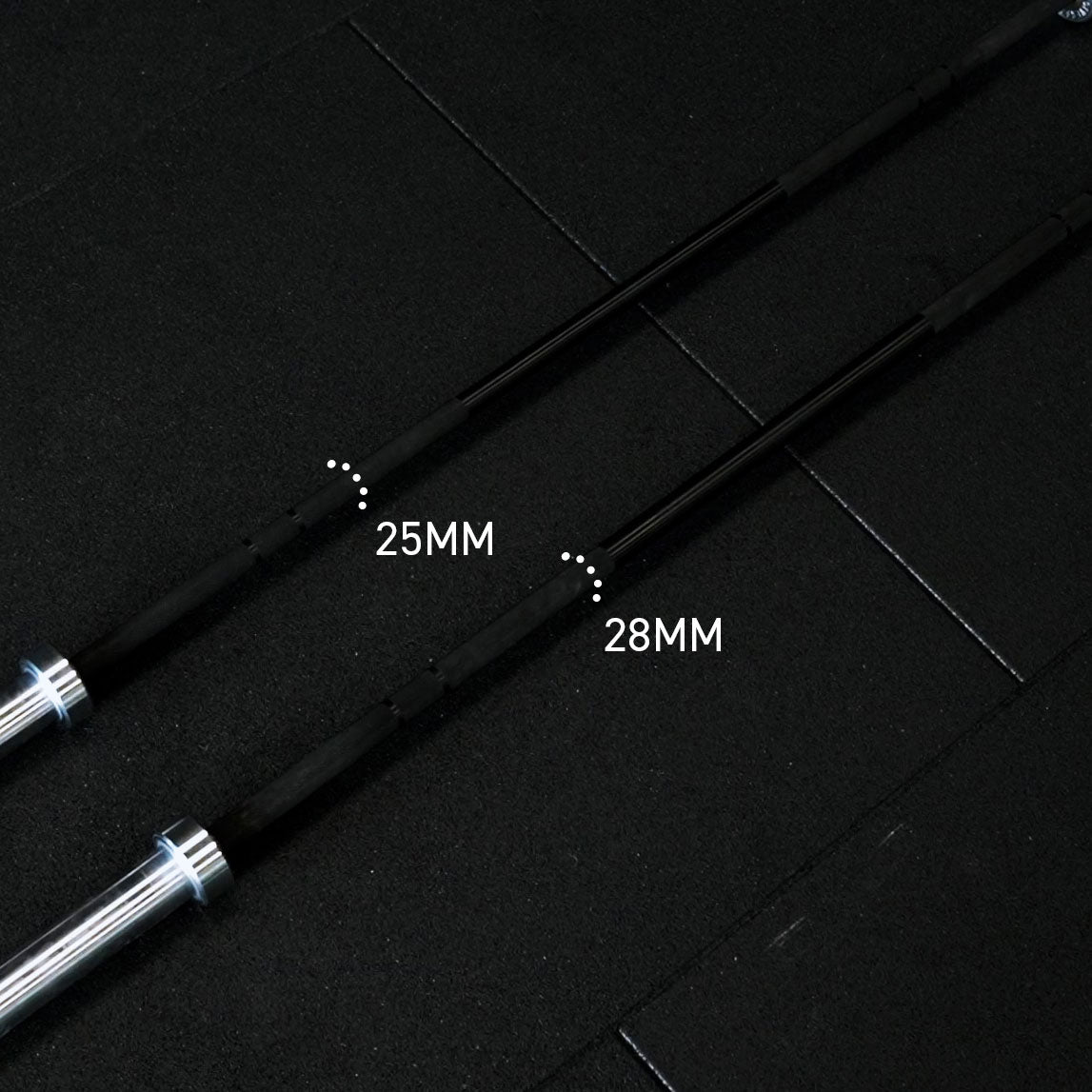
SLEEVE LENGTH
The standard sleeve length for a 7ft, 20kg Olympic barbell is 16” (406mm), but we do sell compact barbells with a shorter sleeve, such as the Compact Bar with a 30cm loadable sleeve. The shorter the sleeve, the less weight plates you will be able to load onto the bar, you must also take into consideration the collars that will be required on the end of the sleeve.
BAR DIAMETER
As a rule of thumb, a men’s barbell weights 20kg and has a bar shaft diameter of between 27-29mm and is 7ft 2" (2.2m) in length. A Women’s barbell usually weighs 15kg, has a bar shaft diameter of 25mm and is 6 ft 5” (2m) in length. A youth barbell weighs 10kg, has a bar shaft diameter of 25mm and ranges between 60-67” in length (this size reduction is off the sleeves).
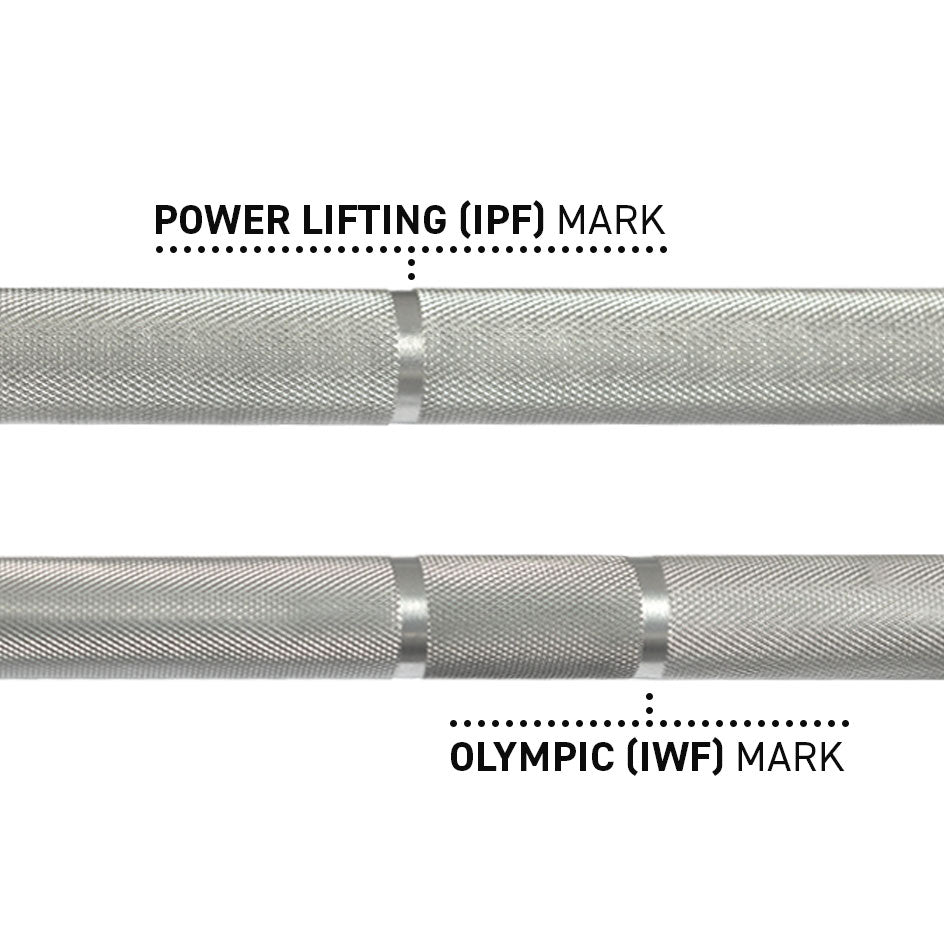
WHAT DO THEY MEAN?
BARBELL RING MARKS
There are 2 types of the marking on barbells, these are the power lifting and Olympic lifting rings. The inner ring is for power lifting, these rings are 81cm apart from each other, the outer ring are for Olympic lifts and these are 91cm apart.
The majority of our bars, including the Ultra, Wolverson and Infinity bars have dual markings on them. These bars will allow you to perform both the explosive Olympic lifts and the slower powerlifting lifts all on the same bar, making them ideal for CrossFit and garage gym settings.
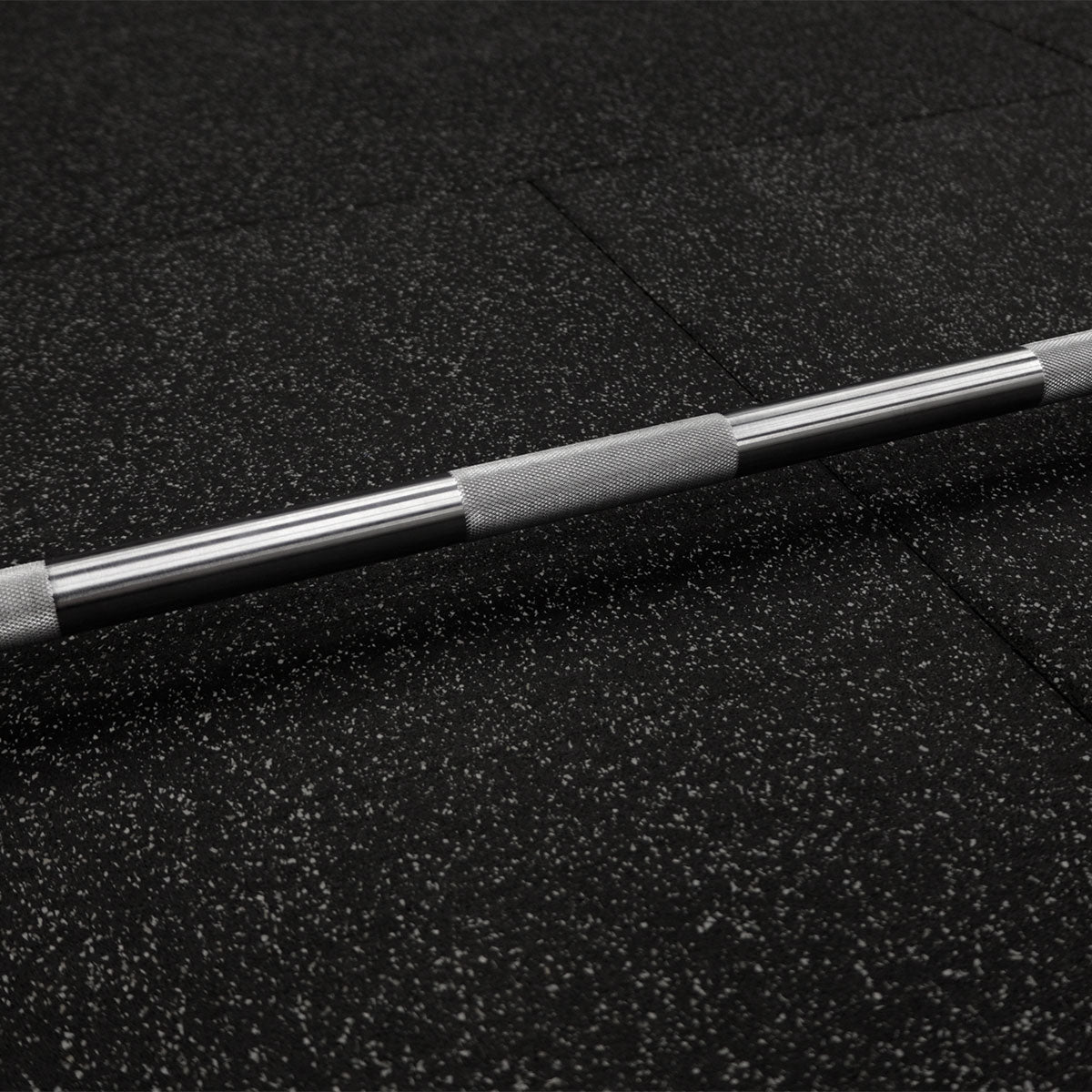
CENTRE KNURLING
A centre knurling is used for additional grip when performing squats, the knurling will help grip your upper back and help the bar become secure. Multi-purpose bars such as the Wolverson Olympic Bar does not have a central knurling, but the Power Bar does have one.
BARBELL BREAKDOWN
MEN'S BARBELLS

Ultra Bar |

Olympic Bar |

Foundation Bar |

Power Bar |
|
| Weight | 20kg | 20kg | 20kg | 20kg |
| Length | 7ft 2" | 7ft 2" | 7ft 2" | 7ft 2" |
| Loadable Sleeve Area | 415mm | 415mm | 415mm | 415mm |
| Material | Spring Steel | Steel | Steel | Steel |
| Tensile Strength Rating (PSI) | 210k | 205k | 200k | 205k |
| Yield Strength Rating (PSI) | 195k | 185k | 181k | 185k |
| Bearings (per sleeve) | 4 x needle | 4 x needle | 2 x needle | N/A |
| Bushings (per sleeve) | 1 | 1 | 1 | 2 x 30mm 2 x 50mm |
| Centre Knurling | No | No | No | Yes |
| Knurling | Passive | Passive | Passive | Aggressive |
| Whip | High | Medium | Medium | Low |
| Diameter | 28mm | 28mm | 28mm | 29mm |
| Coating (shaft) | Black Hard Chrome | Black Hard Chrome | Hard Chrome | Hard Chrome |
| Coating (sleeve) | Hard Chrome | Hard Chrome | Hard Chrome | Hard Chrome |
| Use | CrossFit Olympic | CrossFit Olympic General | General | Squat Bench Deadlift |
| Warranty* | 3 Year Commercial | 2 Year Commercial | 1 Year | 3 Year Commercial |
*When used on Correct Protective Flooring
WOMEN'S BARBELLS

Women's Ultra Bar |

Women's Olympic Bar |

Women's Foundation Bar |
|
| Weight | 15kg | 15kg | 15kg |
| Length | 6ft 5" | 6ft 5" | 6ft 5" |
| Loadable Sleeve Area | 320mm | 320mm | 320mm |
| Material | Spring Steel | Steel | Steel |
| Tensile Strength Rating (PSI) | 205k | 205k | 200k |
| Yield Strength Rating (PSI) | 190k | 185k | 185k |
| Bearings (per sleeve) | 4 x needle | 4 x needle | 2 x needle |
| Bushings (per sleeve) | 1 | 1 | 1 |
| Centre Knurling | No | No | No |
| Knurling | Passive | Passive | Passive |
| Whip | High | Medium | Medium |
| Diameter | 25mm | 25mm | 25mm |
| Coating (shaft) | Black Hard Chrome | Black Hard Chrome | Hard Chrome |
| Coating (sleeve) | Hard Chrome | Hard Chrome | Hard Chrome |
| Use | CrossFit Olympic | CrossFit Olympic General | General |
| Warranty* | 3 Year Commercial | 2 Year Commercial | 1 Year Home Use |
Technique & Training Bars
Are you new to weightlifting or looking to teach your children proper barbell techniques? Training and technique bars can help! These bars are specifically designed to help beginners learn proper form and technique when performing barbell exercises, which can reduce the risk of injury and improve overall performance.
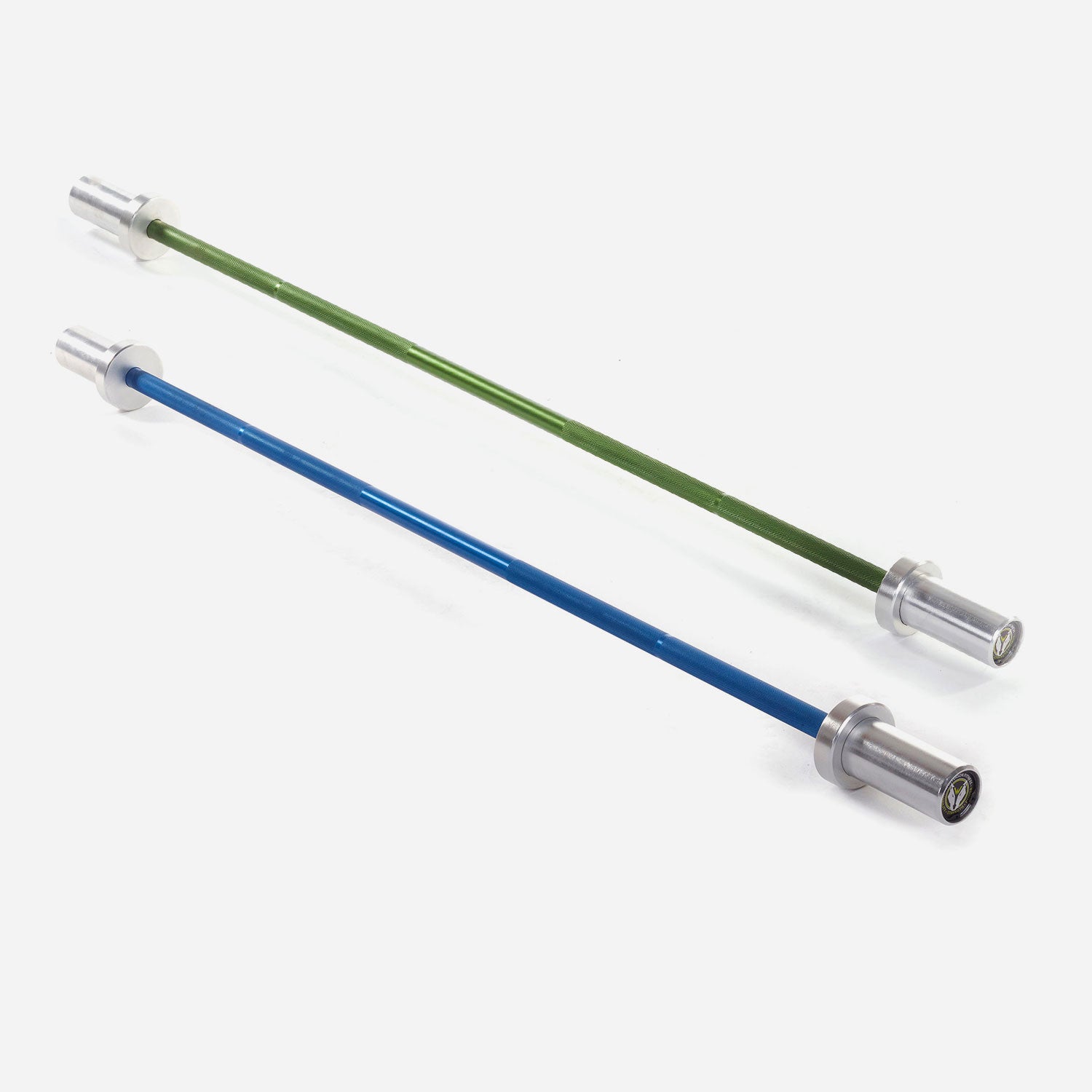
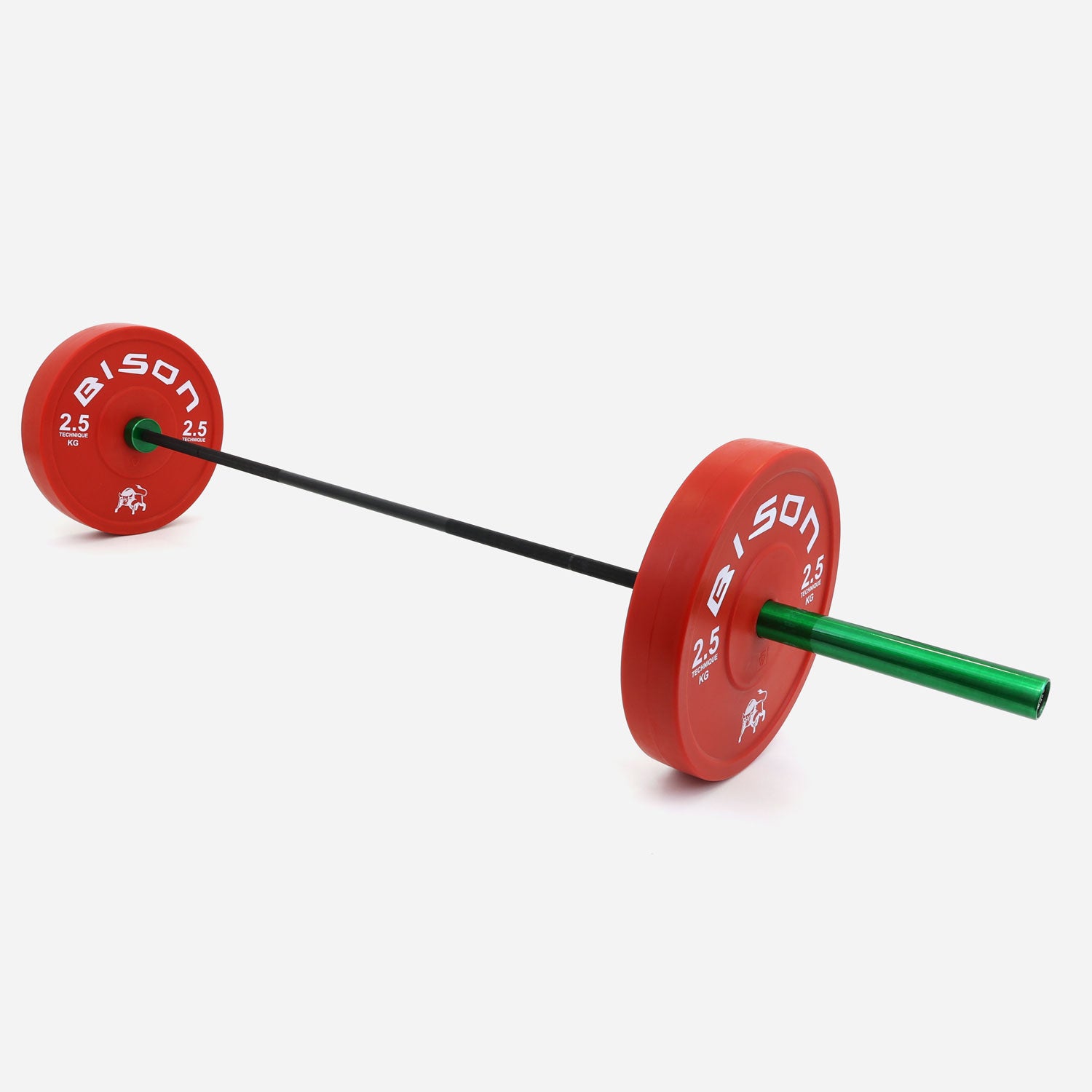
Training Bars
Training bars are typically lighter than standard barbells and have a smaller diameter, making them easier to grip and control. This can be especially helpful for children or those who are new to weightlifting. Training bars are also great for practicing technique and building confidence before moving on to heavier weights.
Technique Bars
Technique bars are similar to training bars but are designed to help with specific exercises, such as the snatch or clean and jerk. These bars often have different grip positions or markings to help with proper hand placement and technique.
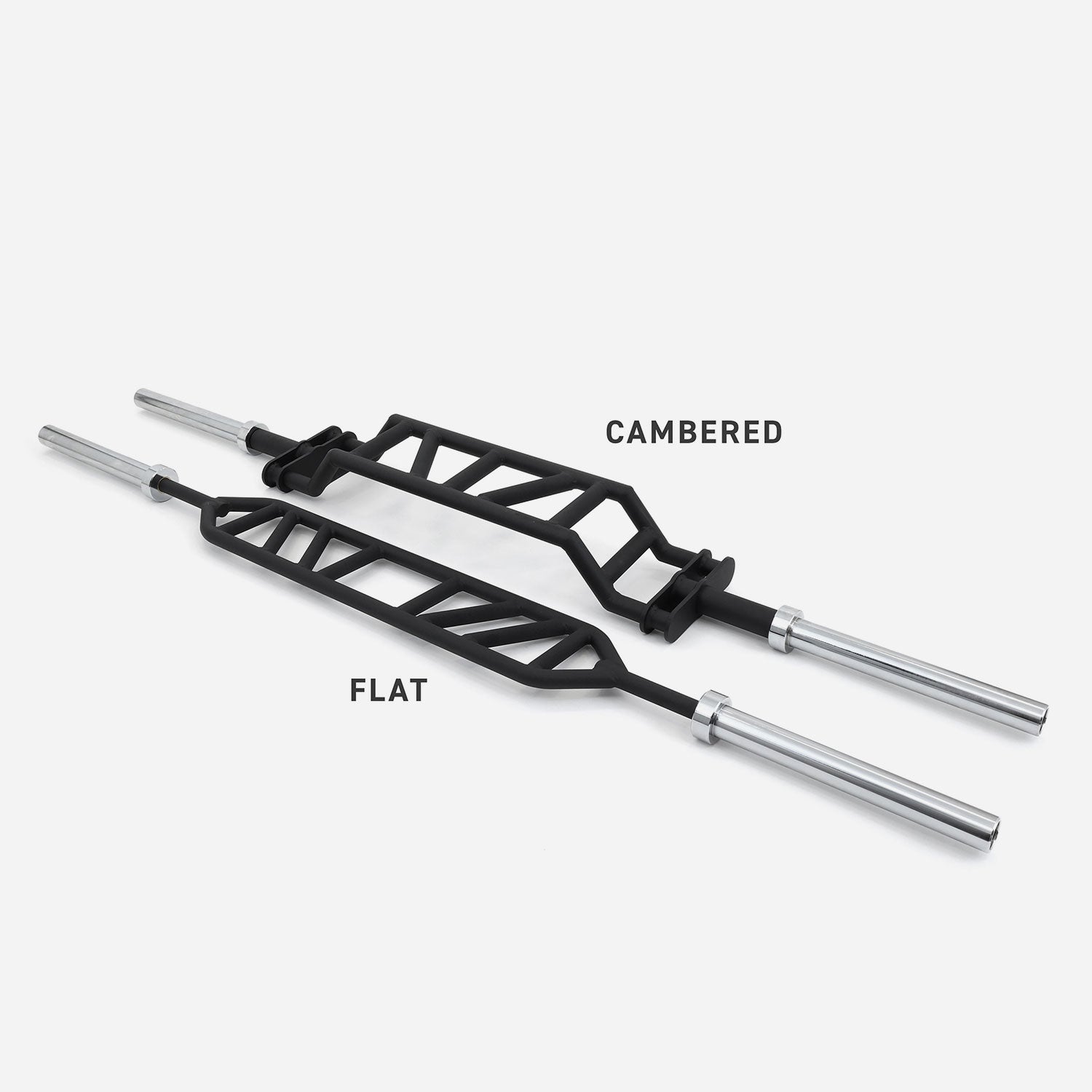
SWISS BARBELLS
A Swiss bar, also known as a multi-grip bar or football bar, is a type of barbell that features multiple handles in a neutral grip position. The handles are typically angled and positioned differently than a traditional barbell, allowing for a variety of grip widths and hand placements. This unique design offers a different way to train upper body muscles, reducing strain on the shoulders and wrists while targeting different muscle groups.
BENEFITS OF SWISS BARBELLS
Reduces Shoulder Strain
One of the primary benefits of Swiss barbells is that they reduce shoulder strain. This is because the neutral grip position places the shoulder in a safer and more stable position. This makes Swiss barbells an ideal option for those with shoulder injuries or anyone looking to reduce the risk of shoulder injuries.
Increases Range of Motion
The neutral grip position of Swiss barbells allows for a greater range of motion in the shoulders and elbows. This increased range of motion can help to improve flexibility and mobility in the upper body, making it an excellent option for athletes or anyone looking to improve their overall fitness.
Targets Different Muscles
Swiss barbells offer a unique way to target different muscles in the upper body. By using different grip positions, you can target the chest, shoulders, triceps, and biceps. This can help to improve overall upper body strength and muscle development.
Provides Variety
Swiss barbells offer a great way to add variety to your workout routine. By switching up the grip position, you can add variety to your workouts and prevent boredom. This can help to keep your workouts interesting and challenging, which can help to improve motivation and adherence to your fitness goals.
